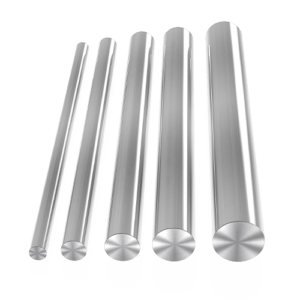Introduction

In the realm of industrial applications, the choice of materials can significantly impact performance, durability, and cost-effectiveness. Among the various options available, 420 stainless steel stands out for its unique properties and versatile uses. This blog explores the advantages of utilizing stainless steel 420 in industrial settings, highlighting its key characteristics, applications, and benefits.
Key Characteristics of 420 Stainless Steel
420 stainless steel is a martensitic stainless steel that contains 12-14% chromium, making it suitable for applications requiring high strength, hardness, and wear resistance. Below are some key characteristics:
- High Hardness: Stainless steel 420 can achieve high levels of hardness after heat treatment, making it ideal for components subject to heavy wear.
- Corrosion Resistance: While not as corrosion-resistant as austenitic grades, stainless steel 420 offers good resistance to mild atmospheres, fresh water, and many mild chemicals.
- Machinability: It exhibits good machinability in its annealed condition, although it becomes more difficult to machine after hardening.
- Weldability: Fair weldability when compared to other martensitic stainless steels, with preheating and post-weld tempering often required to reduce the risk of cracking.
Applications of 420 Stainless Steel
420 stainless steel finds applications across various industries due to its balance of properties. Common uses include:
- Cutlery: Knife blades and surgical instruments benefit from stainless steel 420 sharpness retention and corrosion resistance.
- Industrial Tools: Components such as cutting tools, molds, and dies that require hardness and wear resistance.
- Medical Instruments: Surgical instruments and dental tools where sterilization and corrosion resistance are crucial.
- Textile Industry: Textile cutting tools and equipment where durability and sharpness are essential.
Advantages of Using 420 Stainless Steel
Durability and Wear Resistance
420 stainless steel is valued for its ability to maintain sharpness and durability in harsh environments. Its high carbon content contributes to its wear resistance, making it suitable for applications where prolonged use is expected.
Cost-Effectiveness
Compared to higher-grade stainless steels like 316 or 304, Stainless steel 420 offers a more cost-effective solution without compromising essential properties. This makes it a preferred choice in applications where performance requirements can be met at a lower material cost.
Ease of Machining
In its annealed condition, Stainless steel 420 is relatively easy to machine, allowing for intricate designs and precise manufacturing processes. This machinability enhances its suitability for various industrial applications.
Heat Treatment Flexibility
The versatility of heat treatment processes allows manufacturers to tailor the mechanical properties of 420 stainless steel to specific application requirements. This includes achieving different levels of hardness and toughness through quenching and tempering processes.
Comparison of 420 Stainless Steel with Other Stainless Steels
| Property | 420 Stainless Steel | 304 Stainless Steel | 316 Stainless Steel |
|---|---|---|---|
| Corrosion Resistance | Moderate | High | Very High |
| Hardness (Rockwell C) | 50-55 HRC | 20-25 HRC | 25-30 HRC |
| Machinability | Good | Fair | Fair |
| Weldability | Fair | Excellent | Excellent |
| Cost Effectiveness | High | Moderate | Moderate |
Environmental Considerations
In addition to its mechanical properties and cost-effectiveness, environmental considerations are increasingly important in material selection. stainless steel 420, while offering good corrosion resistance in many environments, may not be suitable for applications where sustainability and environmental impact are critical factors. The production of stainless steel, including 420 grade, involves significant energy consumption and emissions, particularly during the smelting and refining processes. Manufacturers and engineers should consider these factors alongside performance requirements when choosing materials for eco-conscious applications.
Future Trends and Innovations

As industries continue to evolve, so too does the demand for materials that can meet increasingly stringent performance standards. Innovations in metallurgy and manufacturing processes may lead to advancements in 420 stainless steel, enhancing its properties such as corrosion resistance, machinability, and overall sustainability. Research efforts are underway to develop new alloys and surface treatments that could expand the application range of stainless steel 420 into more demanding environments and specialized industries. Keeping abreast of these developments will be crucial for stakeholders looking to leverage stainless steel 420 advantages in future industrial applications.
Conclusion
420 stainless steel offers a compelling combination of hardness, wear resistance, and cost-effectiveness that makes it a preferred choice in many industrial applications. Whether in cutlery, industrial tools, medical instruments, or textiles, its properties contribute to improved performance and longevity. Understanding these advantages allows manufacturers and engineers to leverage stainless steel 420 effectively in their designs.
FAQ
Q:Is 420 stainless steel suitable for outdoor applications?
A:Yes, 420 stainless steel offers moderate corrosion resistance, making it suitable for outdoor use in mild environments. However, prolonged exposure to harsh conditions may require additional protection.
Q:How does 420 stainless steel compare to 440 stainless steel?
A:420 stainless steel is similar to 440 stainless steel in terms of its martensitic structure and high carbon content. However, 440 stainless steel typically contains more chromium for increased corrosion resistance.
Q:Can 420 stainless steel be hardened?
A:Yes, 420 stainless steel can be hardened through heat treatment processes such as quenching and tempering to achieve desired mechanical properties.
Q:What are the limitations of using 420 stainless steel?
A:While offering good overall performance, 420 stainless steel has lower corrosion resistance compared to austenitic grades and may not be suitable for highly corrosive environments without proper maintenance.
